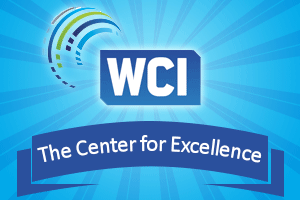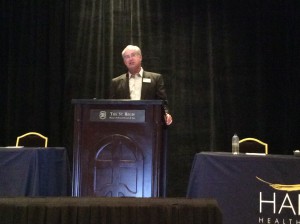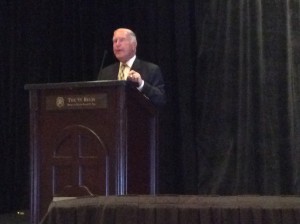Now Let’s Get to Work
“The only place success comes before work is in the dictionary” –Vince Lombardi At the 2015 WCI Conference this session addressed the issues faced from employees returning to work and to create a successful return-to-work program. . The speakers included Margaret Spence, President/CEO, Douglas Claims & Risk Consultants, Inc, and Rose Royo, Supervisor, Workers Compensation, Miami Dade County Public Schools. Key idea to remember, work smarter not harder. Main focus when creating a return to work program is the employee. The injured worker is an employee not a claimant. Imperative to make sure the employee knows they are vital to
(Read the full article…)
Women in Risk Management
This session at the 2015 WCI Conference addressed the challenges and opportunities the panelists have been presented as they lead their organization’s risk management teams. The speakers included Michele Adams, Vice President, Risk Management Services, Walt Disney World Resort, Tara Acton, Director-Claims & Senior Corporate Counsel, CenturyLink, Inc and Valerie Franco, Vice President of Risk Management, Lowe’s Companies, Inc. Why is it important to highlight women in the workforce? Women are outpacing men and more women are entering the workforce. There are about 25% more women graduating college than men. There are certain traits women tend to have that are
(Read the full article…)
Lessons Learned in Risk Management
At the 2015 WCI Conference, risk managers take you behind the scenes in a candid conversation about what they have learned throughout their careers as risk managers. The speakers included David Stills, Vice President, Risk Management, Walmart Stores, Inc, Marc Salm, Vice President, Risk Management, Publix Super Markets, Inc and Michael Fenlon, Senior Director of Global Risk Management, UPS. Lesson 1. Keep your friend close and your actuaries closer It is beneficial to be on the lookout for unintended consequences. Companies will go through time of change, analyze how the company was affected by this change and make note Lesson
(Read the full article…)
Workers’ Compensation Annual Conference Industry Keynote Speaker
Deborah L. Michael, President, Helmsman Management Services, was the industry keynote speaker at the opening of the 70th Annual Workers Compensation Education Conference. There is a wealth of knowledge here at the conference with over 144 pages of educational breakouts covering a range of information. Deborah discussed the outlook for workers’ compensation, key issues, variability in workers’ compensation and the greatest opportunities for 2015 and beyond. Issues to watch in 2015 include: -prescription drug industry-up 6% in 2014 -excessive use to narcotics and opioids -physician dispensing -compound medication -increased generic drug costs The outlook for workers’ compensation for the future
(Read the full article…)
IAIABC 101st Convention
Conference Chronicles will be blogging from the IAIABC 101st Convention on August 31 – September 3, 2015 in Chicago, Illinois. The theme for IAIABC’s 101st Convention is “Big Ideas in the Big City.” The convention program will address big ideas in workers’ compensation, such as the grand bargain, benefit adequacy, exclusive remedy, alternatives to workers’ compensation and more. The event is attended by regulators, administrators, medical directors, claims administrators, medical providers, services providers, government affairs, administrative law judges, insurers, and industry stakeholders. Learn more about this event.
70th Annual Workers’ Compensation Educational Conference
Conference Chronicles will be blogging from the 70th Annual Workers’ Compensation Educational Conference on August 23 – 26, 2015 in Orlando, Florida. This event, hosted by the Workers’ Compensation Institute (WCI), brings together workers’ compensation professionals from across the country to discuss the hottest issues in workers’ compensation and safety. The event features breakout sessions for risk managers, regulators, safety professionals, health care providers, adjusters, insurance professionals, attorneys, medical case managers, professional employer organizations, temporary staffing, mediators, and agents. Learn more about this event.
Physician Input on Current Issues in Workers’ Compensation
At the 2015 Harbor Health MPN Medical Directors Meeting, a panel discussed current issues impacting workers’ compensation. The panel consisted of: Dr. Tedd Blatt (moderator) Dr. Craig Uejo Dr. Don Dinwoodie Dr. Minh Nguyen Dr. Kayvon Yadidi Question: What are the things physicians can do or should do to improve workers’ compensation? Physicians need to assist in training their peers. There is inadequate training of occupational medicine physicians on the nuances of the workers’ compensation system. This is something other stakeholders in the system could also assist with. Physicians need to be considering psycho-social issues in the treatment of patients.
(Read the full article…)
Concerns About Neurodiagnostic Studies
At the 2015 Harbor Health MPN Medical Director meeting, Dr. John Robinton from One-Call discussed concerns around the use of neurodiagnostic studies. This focused on the use of nerve conduction studies and EMGs. EMGs and nerve conduction studies can provide information about the site of the pathology, the causal relationship to work, and the severity of the pathology. One main concern around these studies is the fact they are often over used by medical providers. Some of the other concerns include: Who does the studies? There are credentialing organizations for someone to be board certified to conduct EMGs and to
(Read the full article…)
Physicians’ Role in Workers’ Compensation
At the 2015 Harbor Health MPN Medical Director Meeting, Dr. Ted Blatt from Harbor Health discussed some of the best practices for physicians in the workers’ compensation system and how outcomes-based networks are changing workers’ compensation. Some of his best practices recommendations included: Engage the patients in thinking about their recovery, not about disability. Focus on rehabilitation and not limitations. Look to establish a partnership with the claims administrator and the employer. Physicians need to accept accountability for the management and outcome of the case. They cannot wash their hands on the outcomes. Good communication must be maintained with all
(Read the full article…)
It’s Time to Change Workers’ Compensation
Dave North from Sedgwick opened the Harbor Health Systems 2015 MPN Medical Directors meeting with a keynote address discussing the need for change in our approach to workers’ compensation claims handling. It is important for us to keep perspective of the scope of what we do in workers’ compensation. Every day in California, 850 people will report a workers’ compensation injury. Our role is to be there to help those people recover from those injuries and resume their lives. From the moment a claim is first reported, the injured worker is already embedded in the system. Someone has already made
(Read the full article…)











